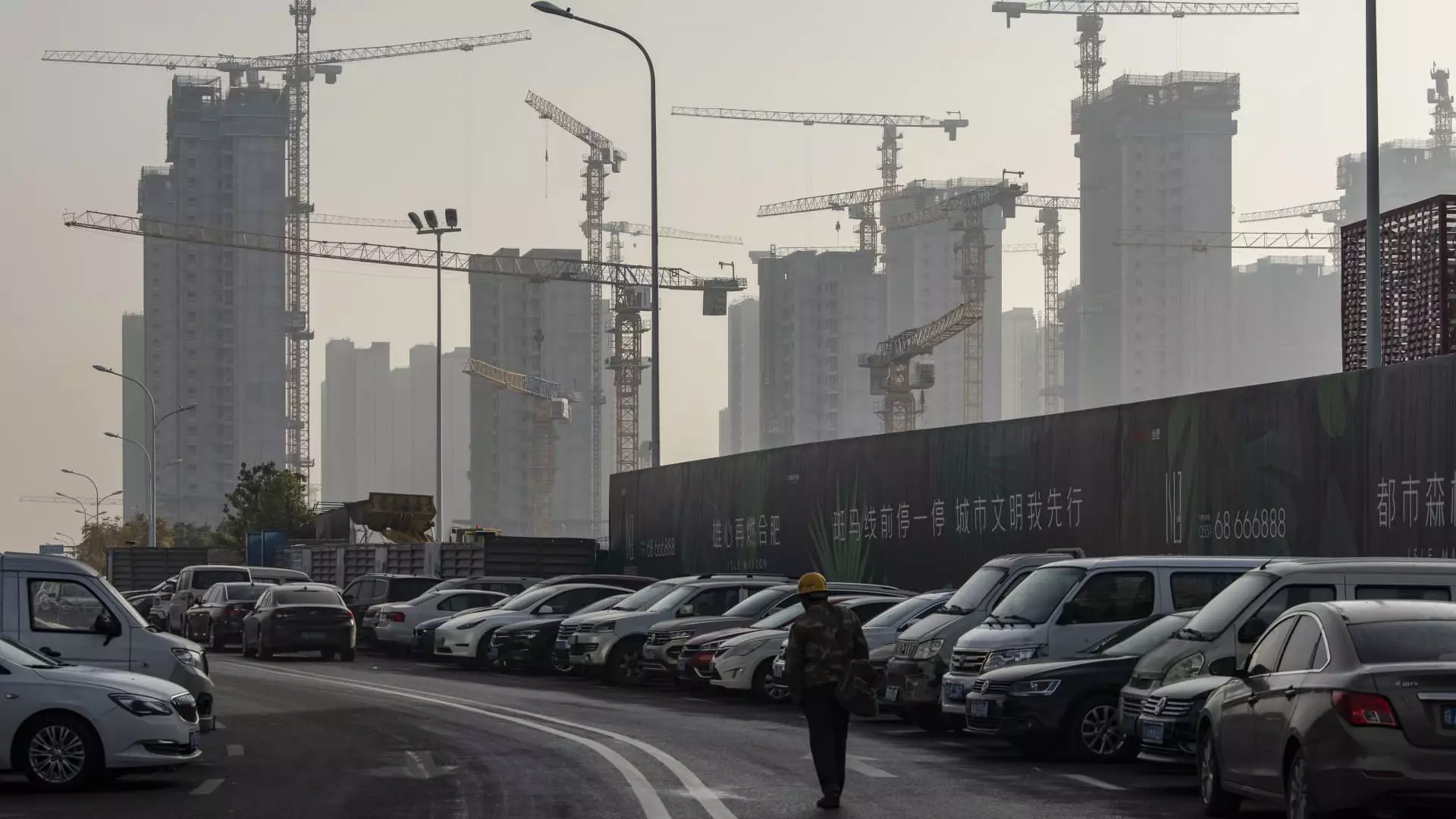China’s real estate market faces substantial challenges as it grapples with a prolonged downturn that analysts predict may not see recovery until 2025. The outlook remains grim despite the government’s recent stimulus measures aimed at rejuvenating this critical sector. According to multiple research firms, the anticipated turnaround is not slated to begin until the latter half of next year, highlighting the disruption within an industry that significantly influences the country’s economic landscape.
President Xi Jinping convened a high-level meeting in late September, committing to “halt the real estate market decline.” This declaration came on the heels of months of incremental measures that were not enough to stabilize the cratering property market. The Finance Ministry also introduced additional measures designed to reinforce stability within the sector, suggesting a coordinated approach to revitalizing an essential pillar of the Chinese economy.
Goldman Sachs forecasts that property prices in China will begin to stabilize late in 2025, with a modest increase of approximately 2% expected in the following two years. Property sales and new home construction are projected to lag behind, potentially not stabilizing until 2027. Similarly, S&P Global Ratings and Morgan Stanley echo this sentiment, indicating that the market might reach its lowest point in the latter half of 2025. Analysts from S&P Global suggest that if the government continues to prioritize support for developers and unsold inventory reduction, a more stable climate could arise as soon as mid-2025.
However, analysts are cautious, noting that the effects of these policies are unlikely to materialize immediately. The Chinese government has signaled that while supporting the struggling real estate sector is vital, it will not overshadow its commitment to fostering advanced manufacturing as a new growth driver.
China’s real estate market plays a critical role in the national economy, contributing more than a quarter of the country’s gross domestic product (GDP). Its ramifications extend into household wealth and local government finances, creating a web of interdependencies. Yet, Chinese developers have increasingly faced challenges in delivering pre-sold homes, exacerbating consumer sentiment and further deteriorating market conditions.
The significant levels of debt among many property developers have only intensified these issues, creating a vicious cycle that hinders recovery. Recent estimates suggest that as many as 20 million pre-sold homes remain unfinished, compounding dissatisfaction among buyers and potential investors.
Goldman Sachs indicates that substantial fiscal intervention amounting to about 8 trillion yuan ($1.12 trillion) may be necessary to avert an even deeper downturn in the property market. Without such stimulus, they caution, the effects of the ongoing downturn could extend for an additional three years.
Supportive policies must tackle various aspects of the crisis, such as alleviating liquidity strain on developers, diminishing unsold housing inventories, and ensuring the completion and delivery of homes that have already been purchased. The model of selling homes before completion, which had been prevalent, proved unsustainable after regulatory constraints emerged aimed at curbing developers’ excessive debt reliance.
While there are signs of relief, with approximately 4 million homes completed and delivered under a new initiative, there remains uncertainty about the overall efficacy of such measures. For instance, past estimates have revealed that nearly 30% of unsold properties risk never finding buyers, pushing banks and other stakeholders to shoulder these burdens.
Recent government interventions have somewhat lifted consumer confidence, reflected in a smaller year-on-year decline of 4% in property sales in October across major cities, compared to a staggering decline of over 25% just the previous month. Yet, stability does not equate to recovery; industry experts predict that any rebound in sales or construction will be modest at best.
S&P anticipates total property sales to plunge to around 9 trillion yuan this year, down from a peak of 18 trillion yuan in 2021. This drop is largely attributed to the persistent rise in unsold inventories, forcing developers to cut prices in a bid to stimulate buying.
The urgency for the Chinese government’s intervention cannot be overstated, as the medium-term outlook remains frail. Analysts from Goldman Sachs emphasize that if the government fails to deliver a robust support package, further drops in property values of 20% to 25% could be in store. Thus, as key parliamentary meetings approach, market observers remain vigilant for any signals of substantial policy changes.
As China’s real estate sector continues to navigate through these tumultuous waters, the combined effects of government initiatives and economic realities paint a complex picture. While there are glimmers of hope for stabilization, the road to comprehensive recovery is littered with obstacles that require strategic maneuvering from both policymakers and market players. Ultimately, how effectively the government can respond to these challenges will dictate the future landscape of China’s real estate market and its broader economic implications.

